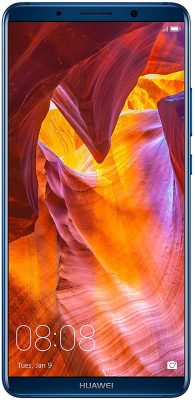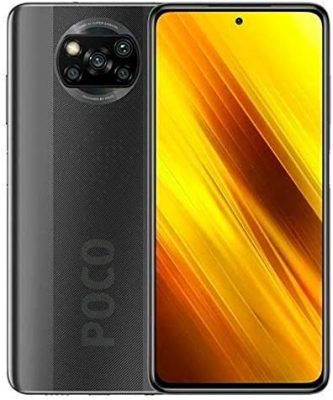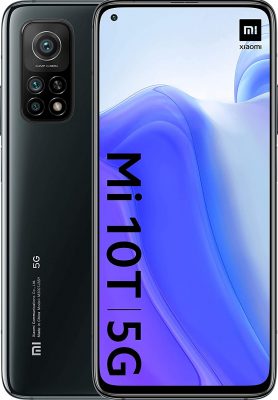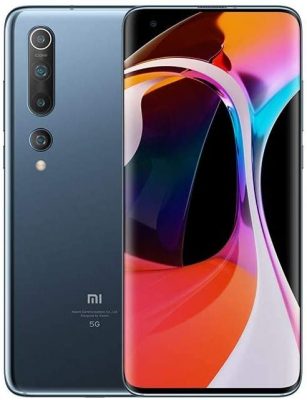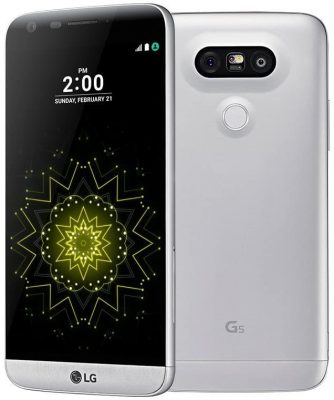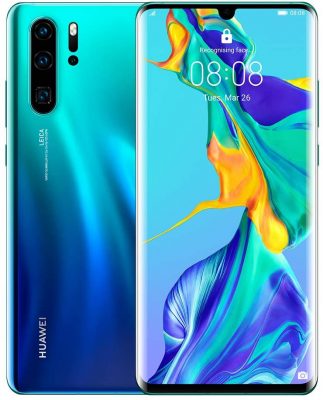Phones with IR blaster enable you to control all your gadgets and devices with just your smartphone. Your phone serves as a remote control with the help of IR sensors. No need to rummage on your stuff finding the right remote control for your devices.
However, just like phones with a removable battery, it is a rarity that you find phones with IR blasters today. Many phone manufacturers have altogether ditched these dated technologies and replaced them with newer and more effective technologies. But this technology is not yet far from being extinct. If you are finding ways on how to control your devices in one go, fret not because we’ve listed down the greatest phones with an IR blaster today.
Best Phones With IR Blaster
Take control of all your devices without using those bunch of remote controls. Just use these smartphones and blast your commands to your devices at your disposal.
The 5G connectivity is a requirement for every flagship phone in 2020. Thanks to this technology, the wireless Internet is now faster than ever. The great news is, you don’t have to experience 5G at a costly price.
The Xiaomi Mi 10T costs way lower than most of the 5G phones today. Aside from this, you also get a 64 MP primary camera with a combination of a 13 MP ultrawide and 5 MP macro lens cameras. In the performance department, you have a Snapdragon 865 processor, and a full HD screen with a 144 Hz screen refresh rate.
And don’t forget the IR blaster with the dedicated Xiaomi remote app. The remote app of Xiaomi contains the controls of most of your everyday appliances like your TV, air conditioner, projectors, and even electric fans. What makes it more drooling is its low price point. This is a great deal especially for those who are finding a premium phone with an IR blaster.
The only downside we see is its lack of support in the US market. Currently, Xiaomi only supports other devices such as scooters, action cameras, power banks, and others. They don’t officially sell their smartphones here yet. But they have a global support website that you can access whenever you encounter glitches on your Xiaomi phone.
The Xiaomi Mi 10 is another phone from Xiaomi that is much to be desired. Not only does it have your essential IR blaster; it also has a 108 MP camera together with three more cameras for your ultrawide and macro shots. This makes it one of the best camera phones today.
You’ll also get a Super AMOLED screen paired with a 90 Hz screen refresh rate. This provides you a buttery smooth screen that can give you the feeling of performance snappiness of this phone. No more frame drops or glitches on your high graphic mobile games! Unlike other Xiaomi phones, the body is made with metal, sandwiched with Corning Gorilla Glass 5 on both front and back. This gives it a more premium feel to the hands.
We just wish they make the Xiaomi Mi 10 more competitively priced than the Xiaomi Mi 10T. The latter was launched worldwide in late September, while the former was launched in February 2020. There should be a little price drop from the Mi 10.
Huawei’s smartphone game may be over in America, but they are not giving up on the American dream yet. The Huawei Mate 10 Pro was one of their last straws in the flagship phone market in the US. It has got an impressive 20 MP and 12 MP dual camera setup and a 4,000 mAh battery that can last the whole day. The screen also supports HDR10 and a 1080 x 2160 screen resolution.
The overall design exceeds expectations and is a real stunner up until now. And we never expected an IR blaster for a 2018 flagship phone, but this phone got one. Now, you can control your TV while watching your favorite shows.
Since Huawei is out of the US market today, the lack of support for this phone may bother you. The absence of the headphone jack and expandable storage may also not be everyone’s cup of tea. There are many options out there that have support for all of these functions and benefits at a more affordable price. This is more inclined to those who want a premium-looking smartphone with a great performance.
TCL is popular as a TV brand, and you never get to see them sell smartphones—until recently. The TCL 10 Pro is their take on your next ideal smartphone. As TCL is already a famous brand for TVs, expect a vibrant 2340 x 1080p full HD AMOLED display. This will elevate your viewing experience on your movies and videos, especially if you are coming from an entry-level smartphone.
The camera module’s placement is rather unconventional. TCL chose a horizontal placement for its quad-camera setup. That may be an awkward design, but at least there’s no protruding camera bump on the back of your phone.
While the TCL 10 Pro is a decent daily driver for your everyday usage, you may feel some hiccups when using this phone. Its Snapdragon 675 chip is really outdated for 2020’s standards. Even if it is paired with a hefty 6 GB RAM, some of you might feel its sluggish performance in the long run. Plus, some phones have better specs and better hardware within its $450 price tag. But if you are finding a phone with an IR blaster, this is one of the great choices for you.
Poco has made a mindblowing stand in the smartphone market last 2017 with its Pocophone F1. Its flagship specs paired with a midrange price made a lasting impact on the smartphone world up until they separated from the parent company Xiaomi and launched the newest slew of smartphones.
One of them is the Poco X3 NFC. It has an adaptive 120 Hz screen refresh rate, 6 GB RAM, and Snapdragon 732G processor which is a great midrange processor for your gaming needs. It still contains Xiaomi’s MIUI 12, its own version of Android 10. Its IR blaster is paired with Xiaomi’s remote app, making this phone like a universal remote control for your devices.
Unfortunately, you’ll only get up to 4G Plus for its internet connectivity. Yes, 4G is blazingly fast, but knowing Poco for manufacturing flagship-specced phones for ridiculously low prices, they should have made an option for this variant. Its large camera bump also protrudes whenever you lie it flat on any flat surfaces. This can make a significant scratch on your camera module.
A mid-range phone does not really need to cost $500 or more. The Redmi Note 9 Pro is one great example of a midrange phone that does not break the bank. It provides a 2400 x 1080 full HD screen, paired with 6 GB RAM and Snapdragon 720G processor. This phone breezes through your daily tasks and leisure, from your productivity apps to heavyweight games.
It also has an IR blaster that is paired with Xiaomi’s remote control app. As already said above, the remote app carries a lot of brands to ensure that you can control every remote-controlled device you have at home.
As it is skinned with MIUI 11, expect tons of ads with it, from installing an app to clearing your cache. This may be quite an annoyance for many, but this is one way of how Xiaomi earns its profit. Maybe give them a little consideration for this.
Looking for a budget smartphone with an IR blaster? The Redmi Note 9 can give you these two easily. For only $200, you can already get a mid-range phone that is more than capable of doing your everyday tasks. Unlike its bigger brother, its punch-hole camera is placed on the upper left corner. This makes your gaming and watching experience more pleasurable. You’ll also get a Full HD screen protected by Corning Gorilla Glass 5, a 5,020 mAh battery, and a 48 MP rear camera.
Since it has a $200 price tag, expect it to have a plastic build. You also have that awkward placement of the fingerprint sensor below the camera, which is prone to accidental smudges on the camera module.
LG G5
If you are veering away from Chinese smartphones or seeking a basic phone that has an IR blaster in it, the LG G5 is the right choice for you.
The LG G5 was one of the flagship phones released by the Korean electronics company in 2016. It packs a modular package, meaning that you can customize this phone to your liking. This revolutionary concept did not convince enough consumers though. While its modular concept still has a long way to go, its base specs did not disappoint. It has a 1440 x 2560 screen, Snapdragon 820 processor, and a removable 2,800 mAH battery. These specs can still perform your daily tasks and some light games. LG’s Quick Remote app will let you control almost all your devices in one go, thanks to its IR blaster.
Take note that this phone can only be maxed out to Android 8.0 Oreo. This can compromise your personal identity if you use this as a backup phone. For those who are still using LG G5 or planning to buy it, you can update its operating system to Lineage OS to make it more secure.
Another great phone that has an IR blaster in it is the Redmi Note 8 Pro. This mid-range offering from Xiaomi that was launched in 2019 still packs a punch until today. It’s all thanks to its Mediatek Helio G90T processor, 6 GB of RAM, and an adequate amount of storage. Its camera is also something to be impressed with. The 64 MP camera sensor can take high-quality shots, a great deal for a phone priced at around $200. It’s also got a headphone jack, which is a rare feature on phones today together with the IR blaster.
Just like other Xiaomi phones here, expect a plasticky build with this phone. Its successor also possesses compelling specs for its price, thus making it hard to choose between the Redmi Note 9 Pro and this phone. And as expected, its MIUI OS contains ads everywhere. So consider that factor before buying this phone.
The Huawei P30 Pro is another flagship contender of Huawei that has an IR blaster in it. It received praise as one of the best camera phones in 2019. It is because of its quad-camera setup that boasts 5x optical zoom and up to 50x digital zoom. Scenic shots are mostly comparable to DSLRs thanks to its incredible zoom function. Pair it with a Kirin 980 processor and 6 GB RAM and you’ve got a true premium flagship phone that can outrun any modern phone. The true meaning of elegance truly lies on this premium phone. And it has got an IR blaster, which is absent on the lesser models.
Too bad it has only a 1080 x 2340 screen. It may feel like you are buying a mid-ranger when its competitors already possess 2K or even 4K screens. The absence of Google Play’s support for Huawei may also be another factor that can make you reconsider buying a Huawei phone.
If you do decide to get a Huawei phone, check out these Google Play Store alternatives.
What Is an IR Blaster?
An infrared blaster, or simply IR blaster, is a tiny device used to control certain devices such as your TVs, soundbar, projectors, and more. The tech behind an IR blaster is quite simple. An IR blaster sends infrared or IR signals to another device that can receive IR. Once it receives the signal, the receiver will execute any commands you put into your IR blaster. Basically, an IR blaster works like your traditional remote control.
But unlike your traditional IR remote controls, an IR blaster sends digital signals through infrared, which is invisible to the naked eye. With an IR blaster, you do not need to directly point at the receiver. Even if there is a blockage on your device, the IR blaster can still transmit its commands to the receiver, thus eliminating the struggle of directly pointing your remote control to the receiver. It also eliminates the clutter of having multiple remote controls for multiple devices.
IR Blaster in Smartphones: Is It Still Relevant?
Phones with IR blasters have been a trend on flagship smartphones since 2013. They help you control any devices around your home, from your smart TVs, soundbars, projectors, and even appliances such as your air conditioners, set-top boxes, and cameras. At last, you don’t need to fidget on your device’s buttons. Plus, you don’t need to rummage on your stuff just to find the right remote for your device.
But as time passed by, IR blasters collected dust from the wind. Newer technologies for device control emerged. It started with Bluetooth 5.0 controls, and more recently, WiFi-enabled controls have been controlling most of our devices today. These controllers can turn on your devices without pointing onto them. You can even turn your TV on even when you’re working in the kitchen. So it is appropriate to ask: are IR blasters still relevant today on smartphones?
As you may have already noticed on our list; almost all of these are from Chinese manufacturers. Most of the prominent phone brands don’t integrate this technology. With the already improving technology of Bluetooth and WiFi, there seems to be no need for outdated IR technology. But we think that IR blasters are still the most reliable device controller today. Many devices today like your conventional TVs and soundbars still have IR sensors in them.
Plus, WiFi controllers are still considered a fad. Most appliances today like your AC or lights still use IR sensors or manual switches in them. So instead of finding the right remote control for your device, you can alternatively use your phone. This will make your phone the all-in-one control device. Say goodbye to the hassle of too many remote controls on your home.
Final Word
IR blasters may be going out of the main stage, but it is definitely here to stay especially for smartphones. With most of our devices still equipped with IR receivers, there is still a market out there for phones with IR blasters. Yes, you may call these “over-glorified” or “overpriced” remote controls. But you can’t deny that they eliminate the hassle of scruffling to find the right remote control for your device. These phones can reduce some clutter in your room because you’ve got yourself an all-in-one remote control: your smartphone.

